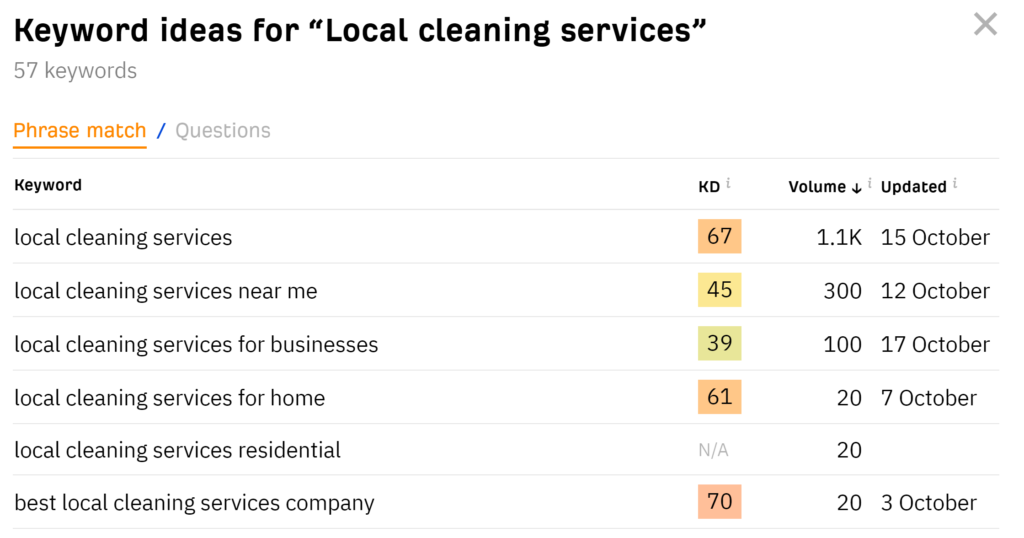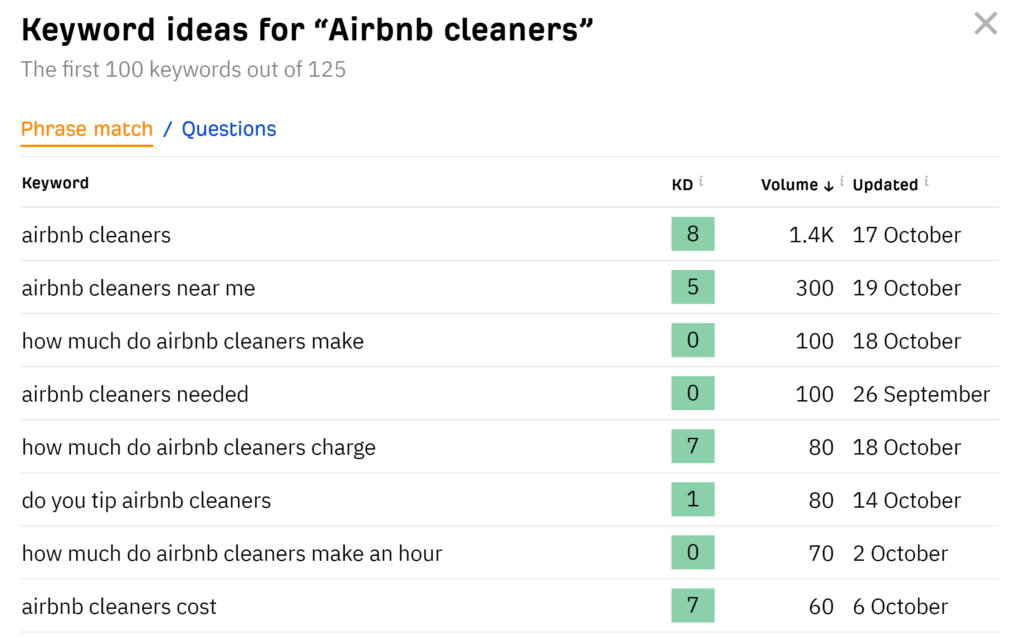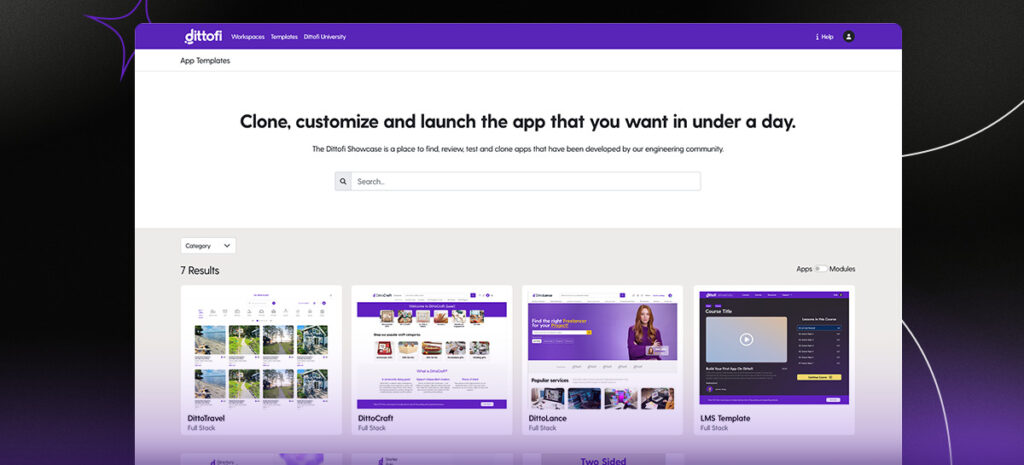So you have an amazing idea for an online marketplace & you’re onto a winner. You’ve identified a gap in the market & you’re certain that your idea is going to be a big success.
But – before you dive into the development of your idea – ask yourself honestly, what evidence have you gathered that you are actually solving a big enough problem?
Building the next billion dollar business is going to take a lot of time & effort. So before you dive into it & spend lots of time, effort & money building your marketplace, you absolutely must validate that there is a genuine need for your marketplace.
It’s important to validate your idea early in the entrepreneurial process to ensure you don’t waste time and resources creating a product that isn’t a good fit. Securing market validation can also instill confidence among investors, crowdfunders, and banks that are considering funding your startup.
Harvard Business School Online
What is market validation
Market validation is the process of determining if there is a need for your product in a target market. Put more simply, it is a way to test your idea before you start building your marketplace.
By validating your idea, you make sure that it is something that people want so that you don’t waste time & resources creating a product that no one wants. If done right, validation can also help you understand your target market better & can earn you your first paying customers.
5 steps to validate your marketplace idea
There are many different ways to validate your marketplace idea. In this section we talk through five steps that you can take to validate your marketplace idea.
You can combine these steps with Dittofi’s Idea Validation Board to structure how you think through the development of a new business initiative.
1. Test your riskiest assumptions
The first step in validating your idea is to design & run a series of structured tests of your riskiest assumptions. This involves the following steps:
1.a. Complete the customer discovery process
Customer discovery is the process of articulating who you think will be interested in using your marketplace. To do this, you can write a positioning statement that explains your platform’s value proposition to both sides of your marketplace. For example, if I want to build a marketplace for cleaners to match with homeowners, my positioning statement is:
“A marketplace that connects homeowners with cleaners has a target for both homeowners and cleaners.”
Out of this positioning statement I can derive my value proposition. For the homeowners specifically, the value proposition lies in simplifying the process of finding and booking home service providers while at the same time ensuring trust and quality in service delivery. Whereas the value proposition for the cleaners is the opportunity to access a steady stream of clients, enhancing their income and reducing the time and effort required to find new jobs.
It may not be obvious immediately, but In each of these statements I have made certain assumptions about my target customers & their need for my marketplace.
1.b. Write down your assumptions
By writing down your positioning statement and value propositions, you now have the ability to uncover a range of assumptions that you are making about your target customers & their need for your marketplace.
In my example, I have made the following assumptions about homeowners.
- Assumption 1 (Risky): Homeowners in the marketplace will consistently have a demand for cleaning services, which may not always be the case as demand can fluctuate based on various factors, such as economic conditions or seasonal variations.
- Assumption 2 (Risky): Homeowners are comfortable allowing unfamiliar service providers into their homes, which may be uncertain due to concerns related to trust and security.
- Assumption 3 (Less Risky): Homeowners will provide accurate and detailed information about their cleaning requirements, location, and scheduling preferences, facilitating effective matchmaking with cleaners, and so on.
For the cleaners, I have made the following assumptions:
- Assumption 1 (Risky): Cleaners have the necessary skills, equipment, and reliability to consistently meet homeowner expectations, which is risky as variations in service quality and reliability among providers can impact customer satisfaction and trust.
- Assumption 2 (Less Risky): Cleaners will actively manage their profiles, respond to booking requests, and maintain a positive reputation through client reviews and feedback, facilitating trust and encouraging more bookings, and so on.
Once you have a list of assumptions written out, the next step is to choose the riskiest assumption, & design a low cost experiment to test if this assumption is true or false. If we prove the risky assumption to be false e.g. that the market demand is NOT consistent for cleaning, then we will need to pivot our business because it means that one of the central assumptions we need to hold true for our marketplace to work has failed.
In the next section, we will look at a low cost way to design this experiment.
1.c. Design an experiment
Your goal as a startup is to maximize your runway i.e. the number of months left you can afford to run your business without becoming profitable. Therefore, you want to find the lowest cost way to test your riskiest assumption. This involves interacting with as many potential customers to find out if the assumption is true or false.
There are lots of methods that you can use to run a low cost experiment. For example, you can run user feedback surveys, create landing pages, use social media to run polls or display targeted ads & so on.
For example, let’s say I want to test the assumption that homeowners will have a consistent demand for cleaning services. To do this, I can run a user feedback survey. This will involve the following steps:
- Create a short & simple online survey focused on gathering feedback from homeowners who have used the platform for cleaning services. The survey should include questions about their usage patterns, factors influencing their choices, & their openness to alternative methods or providers for cleaning.
- Reach out to a random sample of platform users via email, inviting them to participate in the survey. Make sure the email subject and content are engaging and emphasize the value of their feedback.
- To boost survey response rates, you can offer a small incentive, such as a discount on their next cleaning service booking or a chance to win a gift card, to a subset of respondents.
1.d. Run the experiment & measure the results
To run the experiment this means you need to get out there & speak with people & capture their responses. There are various ways to capture user responses. Some of these are qualitative such as reading user feedback to a survey. There are also more quantitative methods, such as checking the number of users who click a call to action button on a landing page.
In our example, we can simply gather and analyze the survey responses. Look for trends and patterns in the data related to usage patterns, any indications of exploring alternative providers or methods, and factors influencing their decisions.
1.e. Learn & grow
The final step is to earn and grow.
Based on the survey findings from the previous step, you can consider implementing changes or enhancements to the platform that address any concerns or preferences identified when running the experiment. For example, if homeowners express interest in specific features or offerings, test the impact of these changes on user behavior and platform usage.
2. Assess market size and share
Another way to validate your marketplace idea is to make an assessment of the market size. There are several ways to assess the market size. To start with, you can use a proxy metric that is a known value & closely correlates to the market size. For example, in our example homeowners & cleaners marketplace, the metric might be the number of households in a specific region. You can then use the proxy metric as part of a larger calculation in order to determine the size of the marketplace.
You can then use other data such as the number of existing cleaners, the number of cleaning services and so on, to narrow down your market segment. For example, we could focus our cleaning marketplace on “Short-Term Rental Property Owners & Turnover Cleaners”. By focusing on such a tight niche, this gives the marketplace the opportunity to focus on building a marketplace that includes niche features required for short-term rental property owners for example, integrating into the renters Property Management Systems (PMS).
3. Research search volume of related keywords
Another way to get a realistic view of the market size for your product is to research the monthly search volume on keywords that relate to your marketplace idea. This can help reveal some interesting insights because consumers that need a product or service will often use search engines to see what the market has to offer.
There are various tools that you can use to test the market such as Moz, Ahref, SemRush & so on. For example, in my homeowners & cleaners marketplace, I may check for the following keywords:
High Intent Keywords:
- “Local cleaning services”
- “Home cleaning near me”
- “House cleaners for hire”
- “Professional maid services”
- “Affordable house cleaning”
Informational Keywords:
- “How to find reliable house cleaners”
- “Cleaning service pricing guide”
- “DIY cleaning vs. professional cleaners”
- “Cleaning tips for a sparkling home”
- “Eco-friendly cleaning products”
Checking one of the keywords using Ahref free keyword generator, I get the following result.

As you can see, there were over 1,100 searches for this keyword in the United States on 15th October. Let’s say you could create content that captured half of these searches everyday, this is a lot of eyeballs on your platform.
However, market size is worthless if there is already a saturated market. Therefore, another aspect of the keyword search is looking out for competition. The column marked KD tells you what is the “keyword difficulty” of the particular keyword. The KD is a score between 0 – 100 and this tells you how competitive a keyword is. The more competitive a keyword, the harder it is to rank for the search term on Google.
This means that although my idea for a “local cleaning service” does garner a lot of consumer interest, there are already competitive solutions. I know this because the KD score in the screenshot above is 67.
So – if I filter this down the total market for cleaning & focus on a narrow customer segment such as “Short-Term Rental Property Owners & Turnover Cleaners”. This gives me a different list of high intent keywords.
High Intent Keywords:
- “Airbnb cleaners”
- “Turnover cleaning service for Airbnb”
- “Vacation rental cleaners near me”
- “Short-term rental property cleaners”
- “Quick turnaround cleaning service”
If I test again using Ahref free keyword planner, you can see that for the high intent keyword “Airbnb cleaners”, there were more than 1,400 searches for Airbnb cleaners on 17th October & the KD score was very low. This indicates that there is a significant market for Airbnb cleaners & that there is not much competition for this keyword. So – it might be a good idea to build this marketplace after all!

In the Entrepreneurship Essentials from the Harvard Business Review, Harvard Business School Professor William Sahlman uses mattress retailer Casper to illustrate this idea. He explains how Casper’s founders assessed the market size for their product by comparing their differentiating factors against the larger market. For Casper, these differentiating factors included its online business model, 100-day return window, and the viscoelastic foam material used in its mattresses.
Casper tested the market by doing keyword research across their differentiating factors e.g. “foam mattress”. They found that thousands of people were searching for mattresses with their differentiating factors, but that the search terms had very low keyword difficulty scores indicating that there was no competition for their mattresses. This gave Casper the confidence to invest in developing a new product for the market with these features.
4. Conduct customer validation interviews
Conducting customer interviews with your target customer segment is a great way to learn about your product’s potential. Customer interviews should be run throughout the lifetime of your product; however, the types of questions that you ask vary based on the stage of your product.
In the idea validation stage, your goal is to work out what your target customers’ current behavior actually is. To determine this, you first need to work out who to interview and how to source the people to interview. This is a very difficult question to answer & for a marketplace, it is even harder because you will need to speak to both sides of the marketplace.
For example, consider our marketplace for cleaners & homeowners. The initial reaction might be to speak to cleaners & homeowners directly. However, you will likely find that whilst there are a collection of freelance cleaners, most professional cleaners already work for a cleaning company. Therefore, in addition to cleaners you will want to speak to a cleaning company directly.
After you’ve worked out what type of users it will be useful to interview & how to locate these users, the next step is to set up meetings with seven or eight of these users & to interview them. The goal of these interviews is to determine what is the current behavior of your target customer. How does your target customer currently solve the problem that you’re trying to solve? This will tell you if there is a big enough problem that it is worth building a whole new product for.
After you’ve run seven or eight customer interviews, you will have a good idea of what the current market landscape looks like & what is the behavior of your current users.
The next question to ask yourself is, how can we build something that is just one quantum better than the existing solutions on the market.
The goal now is to brainstorm alone or with your founding team, find a feature & decide if you think that this feature is good enough that people will switch onto this new product just to have access to this one new feature.
Once you have this feature in mind, it’s time to try building & selling this feature.
5. Build the first version of your marketplace
Once you are convinced (by running tests, customer interviews, checking keyword search terms & collecting user feedback) that there is a market for your product, it’s time to build an online marketplace MVP (Minimum Viable Product) to test your actual marketplace.
At this stage, the ideal situation is to build the absolute minimum product required to get people to spend money on your product. This is because if someone is willing to input their credit card details to get access to your product, this really validates that there is a demand for your product.
To build your online marketplace MVP, we recommend using an advanced marketplace technology such as Dittofi’s no code marketplace builder.
Dittofi has customizable templates for product, service & rental marketplaces. Using Dittofi’s templates, you can build your marketplace in days rather than months. This is achieved by starting with all the essential marketplace features. You can then quickly & easily brand your marketplace. Finally, you can add new features with complete flexibility and without having to write any code (see what the marketplace looks like below).

All of Dittofi’s marketplace templates can rapidly customized from within Dittofi’s rapid, visual development studio, without having to write any code. The code can then be either deployed in a single click into an enterprise grade, managed hosting environment or you can export the code and hand this off to a developer.
You should then take your marketplace MVP back to the potential customers who you initially validated your idea with and show them what you’ve developed. Take feedback from these customers and iterate on your product.
Conclusion: Turn this lesson into action
Building a marketplace business is a process of discovery. Before you start building anything, you need to first validate that there is a need for your marketplace.
It is important to first validate your idea because building a marketplace is very hard work. You can never be sure that your marketplace will succeed, however going through the process of validating your idea before you start will certainly help you get focused & save you time & money building the wrong thing.
Do you have a great idea for a marketplace? Do you want help validating your idea? At Dittofi we have helped hundreds of founders, scale ups, SMEs & enterprises build successful marketplaces. If you’d like us to help, schedule a call with one of our marketplace consultants or use one of Dittofi’s full stack, enterprise grade marketplace templates to build your marketplace today.
Become a Marketplace Insider
Join our inner circle for exclusive insights, coveted trade secrets, and unparalleled strategies – your journey to marketplace dominance begins here.

